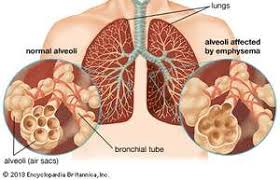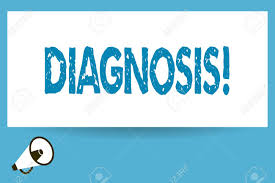
Health care service in the USA
Order Instructions:
I want to know the cost to paraphrase this paper please.
SAMPLE ANSWER
Abstract
The United States of America offers the best health care services in the world. It is however unfortunate that some Americans still lack the best of the services due to varied reasons. Differences are evident along the lines of ethnicity and race. The less fortunate are mainly the non-white Americans, the blacks and the Indians. The situation has indeed attracted attention from researchers and academicians all over the globe. Quality health care should be available for all Americans regardless of their skin color. The health care system therefore needs to be more inclusive and available to people of different beliefs, sexuality, and religion among others. In general, a better health care system is needed to offer equal services to the entire population. Humanity is endorsed with intelligence that enable hem realize inequality and launch uprisings to fight for their rights. However, the affected groups are unable to air their concerns as a competent leadership is lacking in the system to call for quality health services to the groups.
Introduction
It is evident that change is required in health care but the lack of efficient leadership to drive the transformation offer the greatest challenge. Researchers have been reluctant in addressing the issue especially from the perspective of implementing changes that would result to equal services to people of different ethnicities. In some research works, however, researchers only point out the relation between health care for the public and emotional feelings. In this project, the role of appropriate leadership in driving transformations for provision of equal health care services to all Americans is discussed as a measure to ensure that the disadvantaged groups get their fair share. Studies carried out aim at improving health care services to all ethnic groups and races. Generally, emphasis is put on the minority groups
Disparities in the Provision of Quality Health Services to the Minority
In the US, ethnicity has been noted to influence access to health care with more difficulties for the non-whites. The research project takes a critical position and exhaustively examines the existence of disparities in access to health care for the minority groups. Transformation leadership is taken as the most appropriate vehicle in conveying the inevitable change required in the sector. In the paper, the influence of disparities in the health care sector on the implementation of the Affordable care act is examined and recommendations made on the best ways of handling the unacceptable situation. Extensive research is done to ensure that reliable evidence is used in the call exploration of the issue.
Research and review
Disparities in the health care sector as The Kaiser Family Foundation termed them entail inequality in care provision for Americans of different origin, religion, beliefs among other aspects of life (2013). With the disparities, different groups receive different levels of care and for the US skin color is among the leading factors leading to the differences. Agency for Healthcare Research and Quality wrote that differences are evident in the means in which diseases are handled in different populations as expected, disease outcomes also take the trend initiated by the variations in care provision (2012).
To further illustrate, the disparities also cause differences the type of diseases, injuries as well as disabilities and mortalities that different groups experience. From another perspective, differences result from insufficiency of health care services and cultural practices as a result of differences in social; and economic backgrounds. A link is noted between the disparities, emotions as well as the societal issues for different populations. As Deng and Gibson (2008) noted, people with poor economic background receive poor quality care as compared to their rich counterparts. It is also noted that financial instability plays a role in destabilizing the emotional status of individuals. Economic factors are noted to be one of the leading contributors in determining the quality of care people receive regarding their health. People with poor socioeconomic status often get low quality care and end up being emotionally discouraged.
Disparities in access to health care are translated in the life expectance for people in different categories. The minorities are generally found to lead a shorter life as compared to the more abled majority of the Americans. The Affordable Care Act initiated by president Obama has nevertheless achieved in minimizing the gap in health care access between people in different groups. Since its establishment, disparities in the health sector are noted to have subsided with an approach toward equality.
To solve the problem of disparities in the sector, it is important for the leaders to bring changes by collaborating with the framers of policies in the sector. by developing appropriate strategies, leaders would lead their subjects out of the emotional setbacks that result with inequality in access of high standard care in health institutions. It would be important if leaders for example, enact policies that would bring the poor closer to the rich. The policy makers also have the responsibility to solve the issue and end the long-felt disparities. By improving the socioeconomic status of the minority, All Americans would afford the current insurance plans and access to care would be generally be equaled for all. As the Agency for Healthcare Research and Quality wrote, Americans would afford quality health care and there would be minimal pooling of funds into healthcare (2012). It should be noted that most of the shortcomings in ensuring equal access to quality health care are financial in origin.
Research shows that transformational leadership is the best tool in identifying change, formulating a vision as well as executing the changes from an authoritative position to obtain the required changes. (Assanova & McGuire, 2009). To create equality, leaders should institute essential reforms that create coordination and supervisory guidelines for the care of the minority groups (Alino & Alban, 2011). By taking the measure, leaders would be at a better position to evaluate their progress and implement the policies provided on the eradication of the disparities in the health sector. Leaders are in addition expected to understand the need of emotional intelligence as well as its influence on the lives of their subjects. In the mode of leadership, leader’s performance should go beyond the anticipations. This would be achieved by encouraging integrity and fairness through support provision and recognition. As Deng and Gibson (2008) wrote, leaders in transformational leadership try as much as possible to avoid self-interest and would therefore steer up toward elimination of the disparities and lead to the achievement of equal care for people of varied backgrounds.
Gap in the literature
In this research, a gap is noted to exist at the level of leadership and therefore needs to be filled. Assanova and McGuire noted that there exist volumes of leadership that can address the healthcare disparities for the different groups (2009). It is important to address the gaps as by so doing, the transformational leadership and an approach to emotional intelligence forms the basics in achieving curbing the disparities evident in health care provision.
Problem Statement
Disparities in the health sector involve provision of care between for people of varied races, ethnicities, religions and many other divisions. The imbalance existing in the sector results from social, economic as well as cultural factors. Disparities are seen in many forms. Among them is the access to health care, attendance given for various diseases, as well as genetic and ethnic factors. Disparities eventually lead to differences in disease outcomes for different populations. In most cases, the outcome is more adverse for the disadvantaged minority groups as compared to the outcome seen in most other Americans. According to research, a link exists between disparities and low birth weights, and premature miscarriages among other reproductive health abnormalities. These issues often have significant effect on emotions and hence social activities undertaken by the different individuals.
Identifying Gaps to Impact Change
General health includes optimal body functionality inclusive of one’s mental status and functioning. Emotional senses also comprise the general wellness. It is therefore important that people’s emotions are protected from by offering the quality services to them without incidences of discrimination based on skin color, race, ethnicity, religion or any other factor likely to create divisions. It is necessary that leaders realize the impact of emotions on ones health. People often experience emotional destruction from discriminative treatment based on their status in the society. Obstacles noted to affect quality care provision to people include geographical locations, ethnicity, race, gender as well as one’s social status. Health disparities have effect on the psychological states of people and their performance is often influenced. Among personal factors affected by disparities are abilities, acquaintance as well as skills. In addition, health disparities are known to predispose people to chronic diseases and high death rates (Agency of Heathcare Research and Quality, 2012). Research has shown for example that African Americans have a 10% higher risk to cancer as compared to their white counterparts. The same case is seen with diabetes and other common chronic illnesses.
It is also notable that minority groups are less likely to consult private doctors as compared to the people in the majority groups. Poor access to health services is one of the factors that predispose the minority to diseases. Again, the problem roots from the economic status of the people. It is however saddening that the gap between the rich population and their poor counterparts often widens instead of narrowing. The whites in America continue to access health services with increasing efficiency while the situation worsens for the blacks. Such situation as Agency for Healthcare Research and Quality wrote impacts negatively on the livelihood of the minority groups. Minimizing the disparities in the sector would boost emotions at the personal level leading to improved health conditions for the minority groups. Transformational leadership that aims to care for emotional intelligence would lead to better lives for the minority groups and they would in turn enjoy a longer life span.
Personal Public Health Leadership Theory
One of the key pillars of an organization is its leadership. There has been intensive research to explore on appropriate forms of leadership. Researchers have developed multiple theories explaining leadership. Qualities that distinguish quality leaders have been outlined in many research works. Transformational leadership is one of the theories that offer explanations on most appropriate leadership practices. The theory emphasize on individual achievements. The theory for instance indicates that charisma is a necessary trait for leaders. Together with the ability to lead people toward high productivity, charisma makes a leader more appropriate to execute transformations (Lang, 2010). The bond that exists between transformational leaders and their subjects is a motivational factor and reduces incidences of distrust between the parties. In transformation leadership therefore, behavior of the parties is modified to allow healthy interactions between the parties. The mode of leadership in addition orients employees toward a common goal making it easier for organizations to run smoothly. A serving interaction is established in the organization rather than that dominated by a feeling of power (Bass & Riggo, 2006). In addition, the leadership depicts direct relation with personal characteristics. Confidence and emotional feelings are depicted in transformational leadership. In this way, leadership integrates personal attributes with management. It is therefore necessary that transformational leaders be constituted in the management of organizations that require reforms. The style of leadership would work for situations requiring behavioral change in addition to improved management.
Nature of Organizational Change in Healthcare using transformational
Leadership approach
Professionals in health care provision are working to ensure that improvements are noted in the sector. Differences in care provision based on ethnicity, race, religion and color are intolerable for the profession. Leaders in health care are expected to be skillful and to depict competence by being emotionally supportive. The disconnection between leadership and emotional competence should be corrected for the best outcomes on the move to improve equal access to quality health care.
It is important for the framework employed in closing the gap to ensure that health goals are pursued. The framework should offer strategies to which leaders are expected to base their decisions. Such strategies should see to the reduction of individual interests and prioritize on achievements as an organization. By using such leadership methods, the disparities seen in quality health care provision would be solved.
A Representation of the Public Health Leadership Theory
| Set Directions: Mission, Vision and Strategy |
Fig.1 Transformational leadership style cycle using emotional intelligence
Fig 2 The Nature of Organizational Change in Healthcare using transformational Leadership approach.
How the Visual Representation addresses the Literature Gaps
The system addresses gaps by development of concepts from scientific methods of data collection (Les & Magdelena, 2008). Among the developed concepts are theories that that explain different situations in from a scientific approach. The representations are scientific in origin and are the concepts are therefore reliable to refer to in order to understand scientific issues. After identification of the relevant issues, leadership strategies can be formulated to help solve the problems. Generally, visual representation offers proper understanding of situations which in turn allow for development of appropriate leadership techniques to handle the issues.
Method of Data Collection and Analysis
Data was collected by the use of structured questionnaires. Data analysis was enabled by the use of the SPPS statistical software as well as Monkey Survey.com. Data evaluation on the other hand was done through T-test. To maintain the validity of the research, randomization was used in selection of participants in the study. To evaluate transformational leadership, the Pearson coefficient was used together with ordinal and nominal measurement scales. By the use of the tools, the impact of transformational leadership on the lives of the minorities in the US was determined.
Significance of the Study
The research study addressed a problem that is often neglected by researches. The research may open the way for more comprehensive studies regarding provision of quality services to the American minority groups. The study also offered transformative leadership as an approach to overcome the disparity. The research outcome provides important information and strategies that would help in handling the disparities.
Ethical Considerations
All activities in the study were bound within ethical requirements. To further guarantee privacy, standard guidelines regarding information handling will be strictly adhered to. As a requirement, the study will be approved by Public Health Department of Walden University. Permission will also be sought from relevant authorities in the community under test.
Conclusion
The health sector in the United States has been characterized with disparities for long. As observed, the disparities root from differences between the rich and the poor. The larger the gap between the two classes, the more the disparities observed in the health sector. Among the key factors resulting to the disparities are socioeconomic status of the people, ethnicity, race, religion, values and beliefs among others. The best means of addressing the disparities as seen in this research involve the use of transformative leadership. Such leadership should see to increased social welfare among the minority and increased wages to close the gap. All Americans are entitled to equal access to quality health care and leaders should ensure that citizens enjoy the right. Emotional intelligence should also be coupled with transformative leadership for fast achievements in provision of equal access to services.
References
Agency for Healthcare Research and Quality (2012). National Health Care Disparities Report.
Retrieved from http://ahrq.gov/research/findings/nhqrdr/nhdr12/.
Alimo-Metcalfe, B., & Alban-Metcalfe, J. (2011). The development of a new transformational Leadership Questionnaire . The Journal of Occupational and Organizational Psychology, 74, 1 – 27 .
Assanova, M. & Mc Guire (2009). Applicability Analysis of the Emotional intelligence Theory.Indiana University. Retrieved from http://indiana.edu/~spea/pubs/undergrad-honors-honors_vol3_no1.pdf.
Creswell, J. (2011). Research Design: Qualitative, quantitative, and mixed methods approach Custom Ed. Thousand Oaks, CA: Sage Publication.
Deng, L. & Gibson, P. (2008). ” A Qualitative Evaluation on the Role of Cultural Intelligence in Cross-Cultural Leadership Effectiveness,” in International Journal of Leadership Studies, Vol. 3 Iss. 2, 2008, pp. 181-197, 2008 School of Global Leadership & Entrepreneurship, Regent University. URl.
Lang, M. (2010). Transformational leadership: fundamental, models, differences and impact on employees Norderstedt. Germany. Duck und Bindung.
Les, Z & Magdelena, L (2008) Shape Understanding System: The First Step towards the Visual Thinking Machines. Heidelberg. Springer.
We can write this or a similar paper for you! Simply fill the order form!












